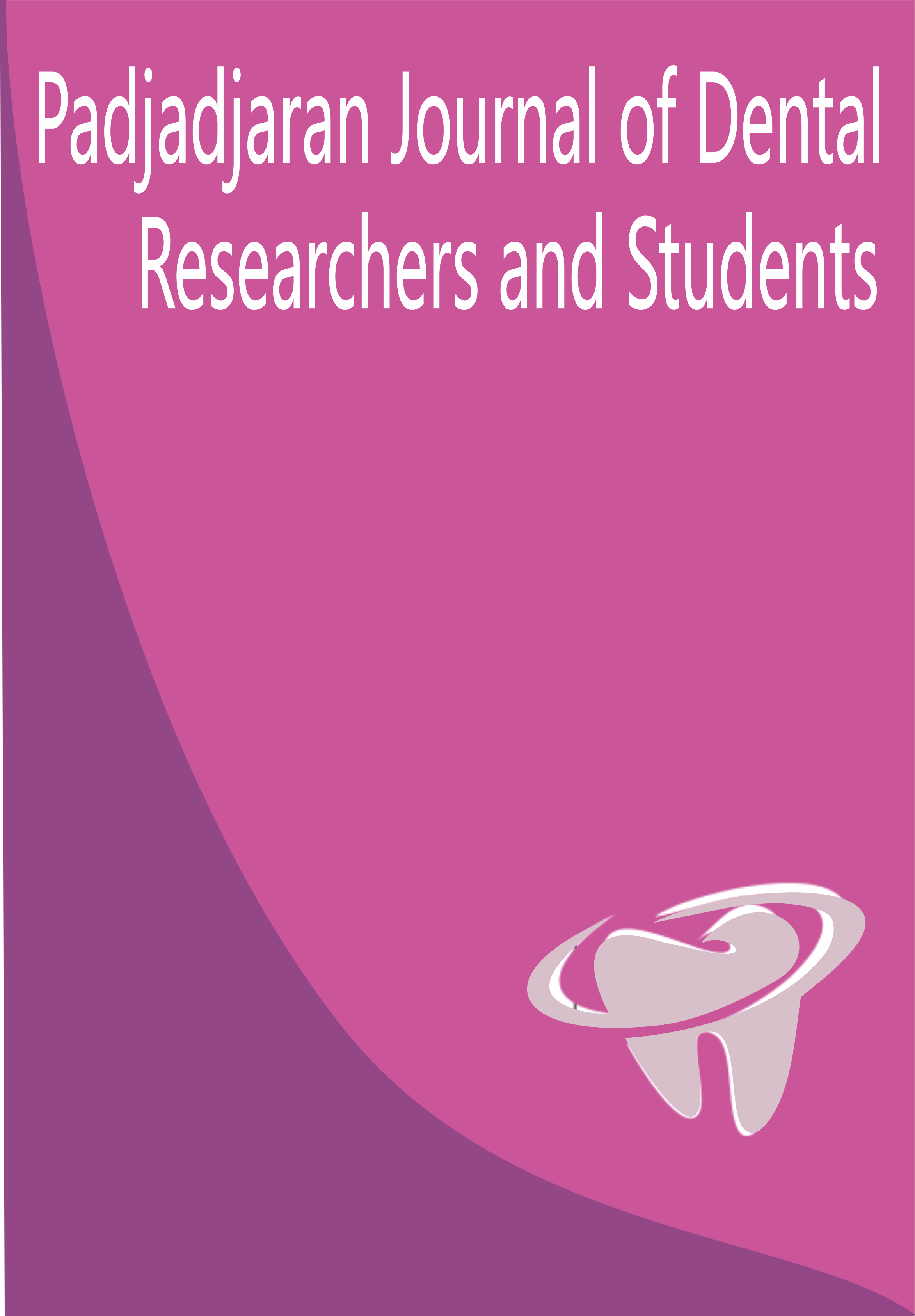The Padjadjaran Journal of Dental Researchers and Students is an open-access journal published in Indonesian, which publishes research articles from junior and mid-level researchers in all fields of basic dental medicine and the development of dental science and technology, from various interdisciplinary and multidisciplinary approaches.
The scope of the Padjadjaran Journal of Dental Researchers and Students includes all fields of dental medicine, including oral biology; dental materials science and technology; oral and maxillofacial surgery; pediatric dentistry; public dental health, epidemiology, and preventive dentistry; conservative dentistry, endodontics, and operative dentistry; periodontics; prosthodontics; orthodontics; oral pathology; dental radiology; as well as advancements and dental science from other scientific approaches.
The journal is published by the Faculty of Dentistry, Universitas Padjadjaran, with an e-ISSN of 2656-985X. Initially, publication was twice a year, in April and October, up until 2021. Starting in 2022, publication frequency increased to three times a year, in February, June, and October. The Padjadjaran Journal of Dental Researchers and Students has also dynamically updated its cover design over the years to be more representative, distinctive, and informative.
The journal accepts article submissions throughout the year via the Open Journal System. Articles undergo initial screening to help junior and mid-level researchers improve their scientific writing skills, followed by a double-blind peer-review process to uphold high-quality scientific standards.
Before submission, all authors must format their articles according to the journal's template and provide complete and valid author and metadata information; otherwise, the article will not be considered for further processing. Submitted manuscripts undergo plagiarism checks using Turnitin to prevent unacceptable levels of plagiarism. Reference management is recommended using Mendeley, following the Vancouver superscript citation style. Keywords should be based on terms included in MeSH.
Submission Acknowledgements, including a Cover Letter with required data and a Statement of Ability to Pay the Initial Processing Charge, are automatically sent to the registered email for each article submission. The Journal Publishing Agreement (including Authorship Statement, Copyright Transfer Agreement, Conflict of Interest Disclosure), along with Article Publication Charge Form and Acceptance Letter, are provided after the article is accepted.
All submitted articles undergo initial editorial assessment, followed by double-blind peer review and editorial copyediting. Editorial practices at Padjadjaran Journal of Dental Researchers and Students adhere to ICMJE Recommendations for Conduct, Reporting, Editing, and Publication of Scholarly Work in Medical Journals. Double-blind peer review follows the RDDA (Related Discipline Different Affiliation) principle, in line with the Ethics Guidelines for Reviewers of Padjadjaran Journal of Dental Researchers and Students. Publication policies and practices strictly adhere to COPE publication ethics standards.
Affiliated with the Indonesian Dental Association (PDGI), the Padjadjaran Journal of Dental Researchers and Students is indexed in: Crossref Metadata Search, Google Scholar, WorldCat, and Dimensions. The journal is nationally accredited by the Ministry of Education, Culture, Research, and Technology (SK No 23/E/KPT/2019) with a Sinta ranking. As of February 28, 2023, Volume 7 Issue 1 has undergone comprehensive template changes.
Starting February 2023, the Padjadjaran Journal of Dental Researchers and Students has updated its research article template for original article can be download here. For a Systematic Review, Rapid review and Scoping review template,which can be downloaded here.
Further history of the Padjadjaran Journal of Dental Researchers and Students is available in the Journal History section. Information on Article Publication Charges or fees can be found in the author fees section.

Vol 9, No 2 (2025): Juni 2025
Table of Contents
Article International Collaboration
|
Tarisya Permata Putri, Anne Agustina Suwargiani, Susi Sukmasari, Inne Suherna Sasmita
|
131-139
|
|
Sitti Annisa Kambolong, Masyhudi Masyhudi, Dewi Arsih Sulistiani, Verry Asfirizal, Imran Irsal, Cortino Sukotjo
|
140-147
|
Article National
|
Nadya Ardinata, Resa Ferdina, Ricky Amran
|
148-156
|
|
Levi Natya Alus, Silvia Anitasari, Khemasili Kosala, Sjarif Ismail, Sinar Yani
|
157-167
|
|
Claudia Nur Rizky Jayanti, Risti Saptarini Primarti
|
168-182
|
|
Rahel Stevani Nainggolan, Siti Wahyuni
|
183-189
|
|
Mohamad Afifuddin Rafi, Ika Andryas, Siti Wahyuni
|
190-199
|
|
Mayang Anggita Sari, Imran Irsal, Riries Choiru Pramulia Yudia
|
200-207
|
|
Suci Rahmadona, Lusi Epsilawati, Merry Annisa Damayanti, Tadeus Arufan Jasrin, Sri Susilawati, Dewi Zakiawati
|
208-217
|
|
Morita Sari, Fauzia Varianziana, Gita Alivia Ananda
|
218-224
|
|
Lisda Damayanti, Muhamad Firdaus Fuadi, Daisy Wulansari
|
225-233
|
|
Pola konsumsi makanan dan minuman pada penderita oral squamous cell carcinoma: Studi cross-sectional
Muhammad Fadhlan Izzul Haq, Asty Samiaty Setiawan, Jamas Ari Anggraini
|
234-244
|
|
Wulan Julianingsih, Dina Auliya Amly, Resa Ferdina
|
245-252
|
|
Andrika Fitriyan Putra, Edrizal Edrizal
|
253-261
|
|
Nadira Azzhani Harahap, Resa Ferdina, Hanim Khalida Zia
|
262-268
|






.png)













